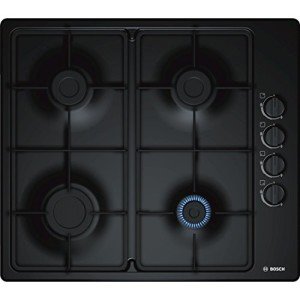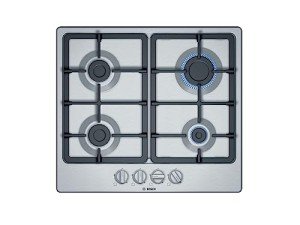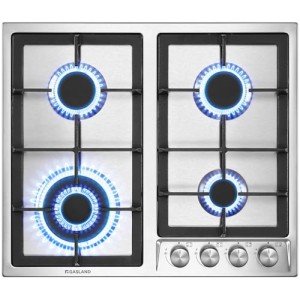In the world of culinary arts, the kitchen has always held a magical allure. It is a place where flavors meld, techniques evolve, and meals transform into memories. The heart of this culinary haven frequently lies in the appliances used. Among the essential tools for cooking enthusiasts is the gas hob. This guide explores the advantages of a 4-burner gas hob, particularly focusing on models equipped with flame failure protection—a critical safety feature.
Understanding the 4-Burner Gas Hob
A 4-burner gas hob is a stovetop equipped with four burners that allow multiple dishes to be prepared simultaneously. Compared to smaller models, it provides the convenience of increased cooking capacity, making it ideal for families, meal prepping, or entertaining guests. Gas hobs are favored by many home chefs for their quick heating capabilities and enhanced control over cooking temperatures.
Key Features of a 4-Burner Gas Hob
A 4-burner gas hob typically includes the following features:
-
Multiple Heat Settings: Each burner can be adjusted to various heat levels, making it suitable for different cooking methods—from simmering sauces to searing meat.
-
Material Variety: Gas hobs are available in different materials, including stainless steel, tempered glass, and enamel. Each material has its benefits in terms of durability and aesthetics.
-
Ease of Cleaning: Most gas hobs come with removable burner caps and grates, making cleaning straightforward and quick.
-
Ignition Types: Many modern gas hobs offer electronic ignition for hassle-free lighting, eliminating the need for matches or lighters.
The Importance of Flame Failure Protection
One of the primary concerns with gas appliances is safety, particularly related to gas leaks. This is where the flame failure protection mechanism comes into play. This feature is designed to detect when a flame goes out unexpectedly—perhaps due to a draft, spilled liquid, or food debris—and automatically shut off the gas supply to prevent leaks.
How Flame Failure Protection Works
-
Sensor Activation: The hob is fitted with a thermocouple or flame sensor that senses the presence of a flame. If the flame extinguishes, the sensor detects a drop in temperature.
-
Gas Shut-Off: Following the detection of the extinguished flame, the system automatically stops the flow of gas to the burner, preventing a potentially hazardous build-up of gas in the kitchen.
-
Quick Response: These mechanisms typically operate within a few seconds, ensuring minimal risk of gas leaks.
Benefits of a 4-Burner Gas Hob with Flame Failure Protection
Integrating the flame failure protection feature into a 4-burner gas hob offers numerous advantages:
-
Enhanced Safety: The primary benefit is increased safety. With the ability to shut off the gas instantly, users can cook with peace of mind.
-
Convenience: In the event of an accidental flame extinguishment, users can continue cooking without worrying about residual gas, making the cooking process more enjoyable.
-
Regulatory Compliance: Many regions have established safety regulations that require flame failure protection, making it essential for both manufacturers and consumers.
-
Versatile Cooking Options: The presence of four burners allows home cooks to use multiple cooking techniques at once—whether boiling, frying, or simmering.
-
Energy Efficiency: Gas hobs are known for their energy efficiency, and when they are equipped with flame failure protection, they minimize the risks of wasted gas during unintended flame outs.
Choosing the Right 4-Burner Gas Hob
When selecting a gas hob, consider the following factors:
-
Size and Space: Ensure the hob fits your kitchen space and aligns well with your culinary needs.
-
Heat Output: Look at the BTU (British Thermal Units) ratings for each burner. Higher ratings can provide more power for certain cooking styles.
-
Safety Features: Aside from flame failure protection, consider other safety measures, such as child locks or residual heat indicators.
-
Budget: Price can vary widely. Establish a budget and compare options that meet your requirements within that range.
-
Brand Reputation: Opt for reliable brands with positive reviews concerning durability and customer service.
Maintenance Tips for Optimal Performance
To ensure longevity and peak performance, consider the following maintenance tips for your gas hob:
-
Regular Cleaning: Clean the hob after each use to prevent food residues from hardening, which can cause ignition issues.
-
Check Burners Regularly: Inspect the burners for clogs and clean them if necessary, ensuring proper gas flow and efficient heating.
-
Monitor Hose and Connections: Periodically check gas hoses and connections for signs of wear or damage to ensure a complete seal.
-
Professional Servicing: Schedule professional maintenance every few years to inspect and service the gas lines and safety mechanisms.
FAQs
1. Is flame failure protection mandatory for gas hobs?
While not universally mandated, flame failure protection is highly recommended and may be required by regulations in some areas.
2. How do I know if my gas hob has flame failure protection?
Refer to the manufacturer’s specifications or manual. If it features thermocouples or flame sensors, it likely has flame failure protection.
3. Can I convert my electric hob to gas?
Yes, but it often requires professional installation and adherence to local codes. Always consult with a qualified technician before switching.
4. How can I enhance safety while cooking on a gas hob?
Keep flammable materials away from the cooking area, ensure proper ventilation, and monitor your cooking closely to avoid accidents.
5. What should I do if I smell gas?
Immediately turn off the gas supply, open windows for ventilation, and avoid using any electrical switches. Leave the area and call emergency services or your gas supplier.
A 4-burner gas hob equipped with flame failure protection is an excellent investment for any cooking enthusiast. Balancing functionality and safety, this appliance elevates the cooking experience while minimizing risks. By understanding its features, benefits, and maintenance needs, users can effectively make informed decisions that enhance their culinary adventures.






